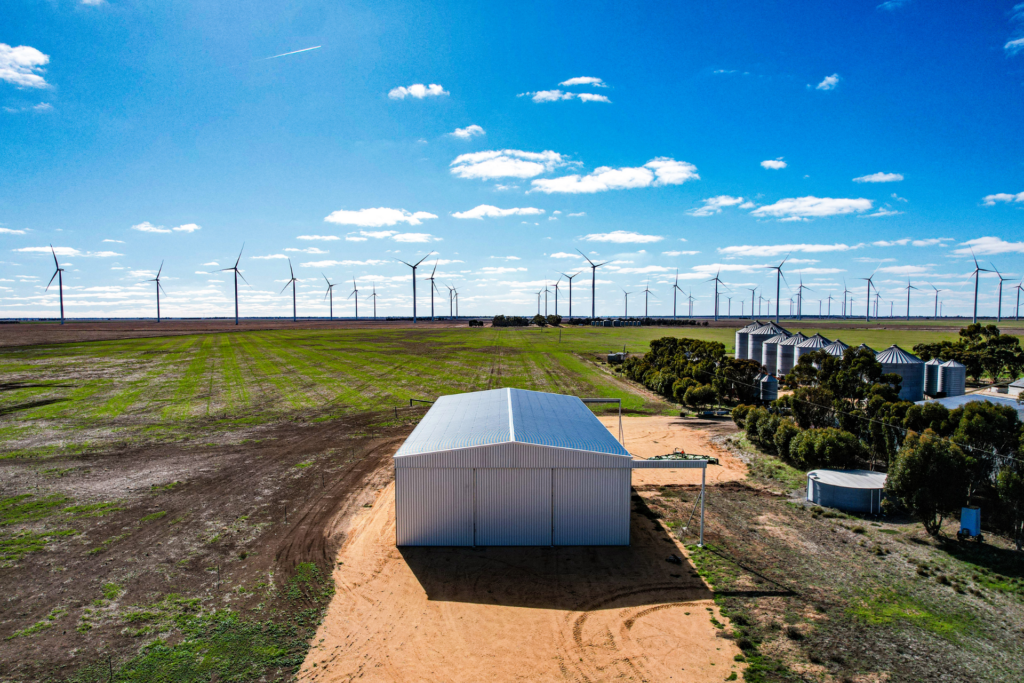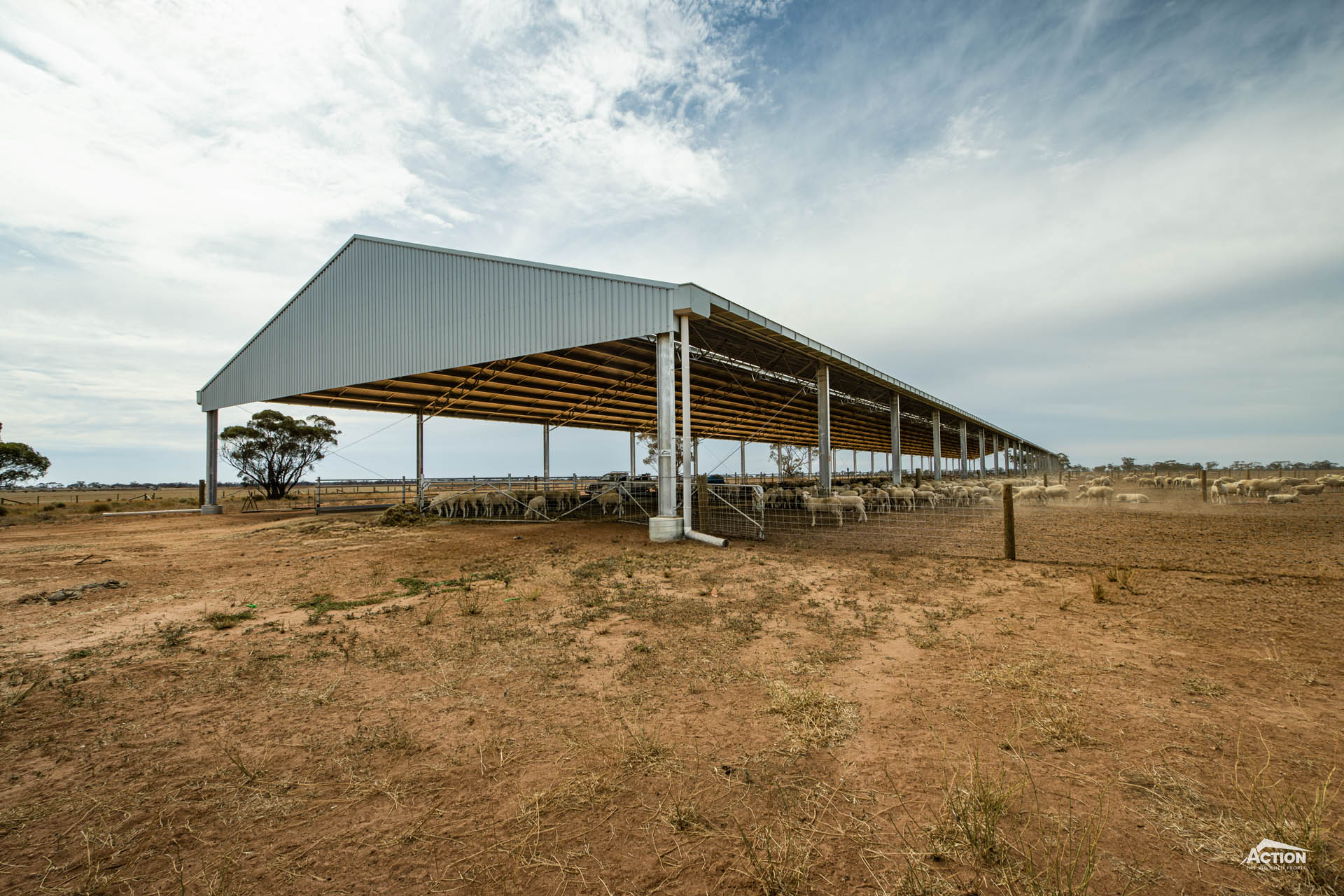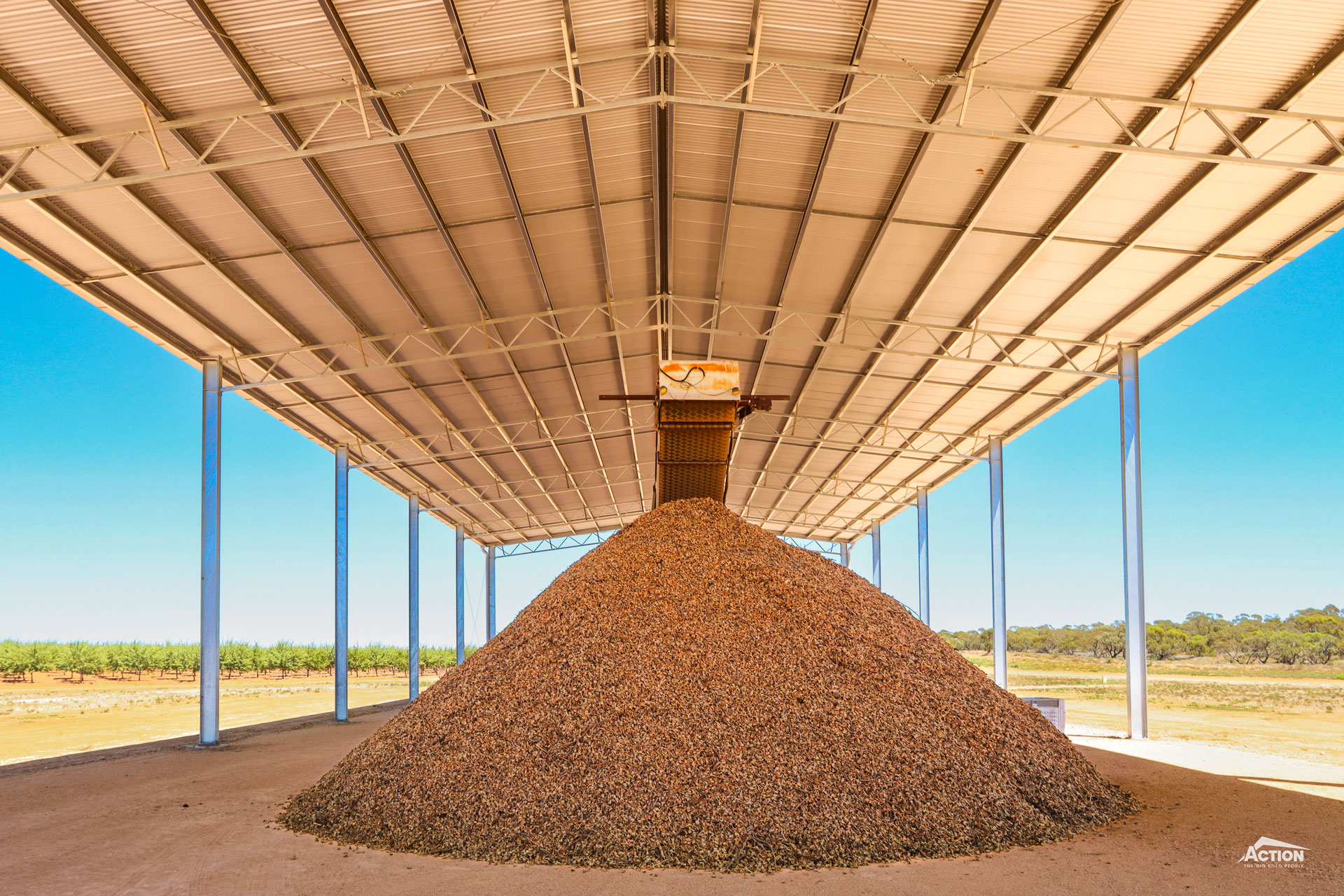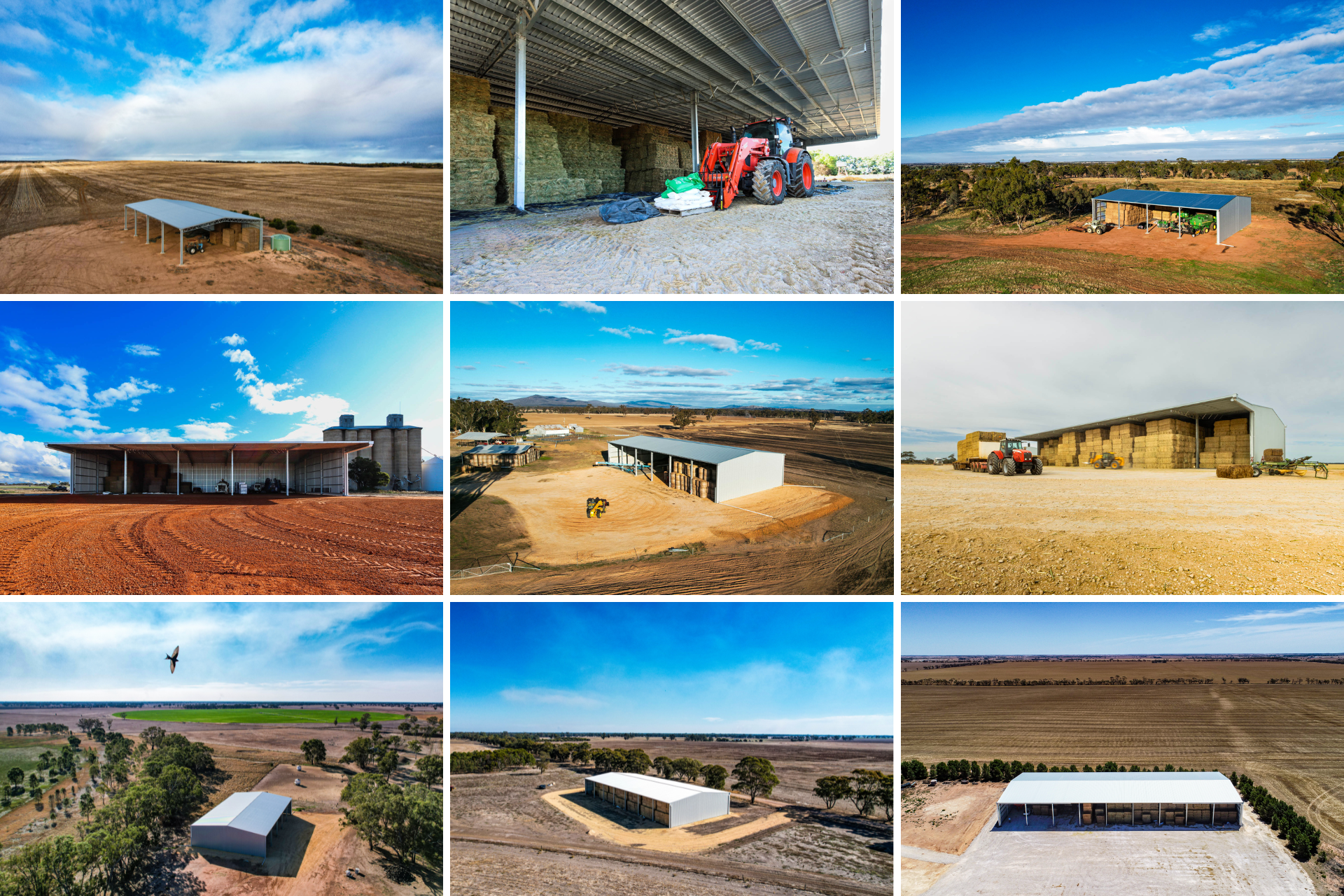New machinery shed builds are in high demand! And one of the most popular configurations has been the drive-through machinery shed.
A drive-through configuration, as the name suggests, is a shed with the two long walls clad and the gable ends left open – allowing you to ‘drive-through.’
While every machinery shed configuration has its advantages, there are a number of really good reasons why sheds with open gable ends have been so popular.
That’s not to say drive-through machinery sheds aren’t without their disadvantage or drawbacks, though.
What works for someone else’s machinery storage, may not necessarily work for you. And vice versa.
So, not sure if a drive-through machinery shed would be the right choice for you?
In this article we look at both the pros and cons of drive-through machinery sheds, to help you decide.
And we’ve also included prices and project ideas to help you kickstart your project planning.
First up, let’s discuss the ‘pros’ of a drive-through machinery shed configuration.
3 Advantages Of A Drive-Through Machinery Shed

Here are three of the many benefits of building a drive-through machinery shed.
1
Storing Long Machinery
The full length of a drive-through shed can be used, making it ideal for storing long machinery such as air seeders.
A drive-through shed also makes storing and moving long machinery in and out the shed easier and less stressful, with no reversing required.
It is also the most cost-effective way of storing long machinery when compared to increasing the span size of your shed to accommodate long machinery.
For example, if you are requiring a shed for storing your air-seeder or B-Double in, a 30-metre-long shed would usually be more cost-effective than building a 30-metre-wide shed.
This configuration also provides quick coverage of long machinery when bad weather hits, without you having to unhook implements or trailers.
2
Storing Wide Machinery
An open gable end is the most cost-effective way to create an extra wide opening in a shed – compared to either installing a girder truss or upsizing your bays from a standard bay size.
For example, a 36m (L) x 18m (W) ‘drive through’ style shed would cost around $100,00 – $115,000 (including GST and installation).
In comparison, a 36m (L) x 18m (W) three-sided shed with a girder truss on the front to provide an 18-metre-wide opening would cost around $120,000 – $130,000.
3
Customisable Design
There are several ways that you can customise drive-through machinery sheds.
The two main ways are sliding doors and gable infills.
Sliding doors can be installed on the gable ends to provide additional weather protection. These also improve the access into the shed and can be installed on the gable ends and/or the side walls.

When installing sliding doors in the gable end, the doors can be pushed out onto outriggers to create a wider opening – as shown in the machinery shed project pictured.
Wondering about the cost to include sliding doors on your project?
This does vary on the span of the shed and the size of the doors. But, as an example, on an 18-metre span shed, three 6-metre-wide doors would cost around $24,000 – $28,000 (including GST and install).
Or if you aren’t sure if you need to include sliding doors in your shed build, we can make provision during manufacturing so that if you do decide that they would be beneficial, sliding doors can be added in the future.
Another custom option is a gable infill. This is partial cladding of the gable ends. But remember, while this provides extra weather protection, it is important to make sure the cladding still allows adequate clearance.
On that note, something to bear in mind is that the depth of the truss will impact the actual clearance height at the lowest point of the shed. For example, a 6-metre eave height on a 24-metre span shed will provide you with a minimum clearance height of 5.25 metres under the truss at the lowest point. This is because the 24-metre span truss is 750mm deep.
You can learn more about clearance and shed heights in this article – What Is The Best Height For My Farm Shed?
3 Disadvantages Of A Drive-Through Machinery Shed
Here are the three main ‘cons’ or disadvantages of building a machinery shed with a drive-through configuration.
1
Limited Access To Small Equipment
In a drive-through shed smaller equipment may get boxed in with other equipment. This means that several machines may need to be moved to access an implement in the middle of the shed.
This can be resolved by incorporating sliding doors or roller doors on the side wall to access your smaller gear.
2
Can Create A Wind Tunnel
Depending on the orientation of the shed, a drive-through shed can become a bit of a wind tunnel.
Again, this issue can be avoided by incorporating sliding doors into the design.
3
Doesn’t Suit Your Storage Requirements
While not necessarily a disadvantage, you may find that another shed configuration suits your storage requirements better.
For example, if providing the best possible weather protection is a high priority, then a fully enclosed shed will provide the most effective weather protection.
Or if you are wanting to build a shed that could be repurposed as a hay shed or a grain shed in the future, then an open-front configuration usually offers the most versatility. Or you could enclose one or two bays to incorporate a workshop.
If you think a drive-through machinery shed is the right fit for your machinery storage, read on to learn about popular sizes, prices and project inspiration.
3 Popular Drive-Through Machinery Shed Sizes & Prices
Here are three of the most common sizes for drive-through style sheds – and an indication of how much you can expect to pay.
- A 24m (L) x 15m (W) drive-through shed would cost approx. $65,000 – $90,000 (including GST, footings and install).
- A 32m (L) x 18m (W) drive-through shed would cost approx. $85,000 – $115,000 (including GST, footings and install)
- A 40m (L) x 24m (W) drive-through shed would cost approx. $140,000 – $175,000 (including GST, footings and install)
Please keep in mind that these price ranges are approximate only and should only be used as a guide.
For more information on machinery shed prices, read our article – How Much Does It Cost To Build A Machinery Shed?
Project Ideas Gallery
Looking for ideas for your project? Browse our gallery of recent machinery shed builds for inspiration.
Or view our latest projects gallery here.
We hope you have found this discussion on drive-through machinery sheds, helpful! Here are some other articles and videos that might be relevant to your project:
- How To Customise Your Machinery Shed
- Top 10 Tips For Shed Site Preparation
- What Is The Lead Time For A New Farm Shed?
And for more farm shed resources and brochures, browse our Learning Hub. Or if you have any questions about your shed project, please give us a call!








